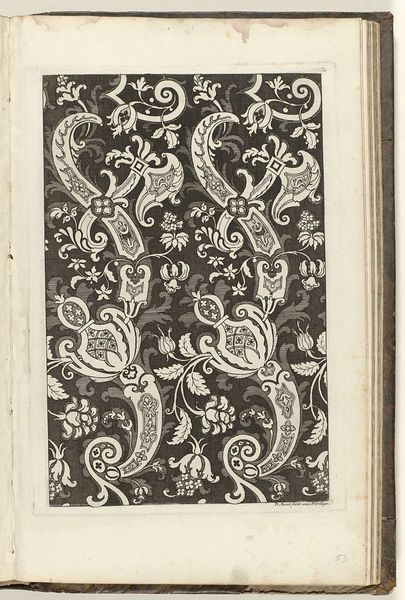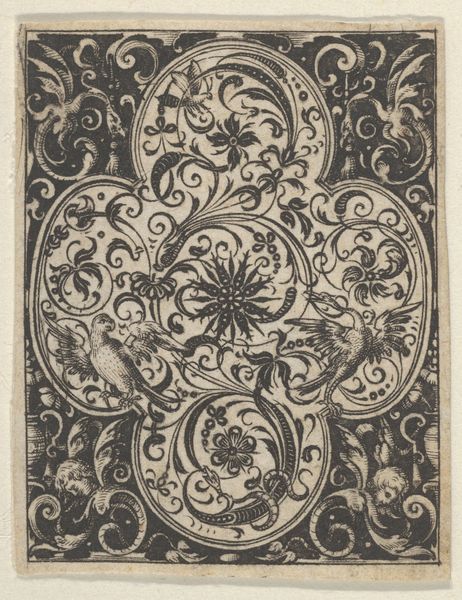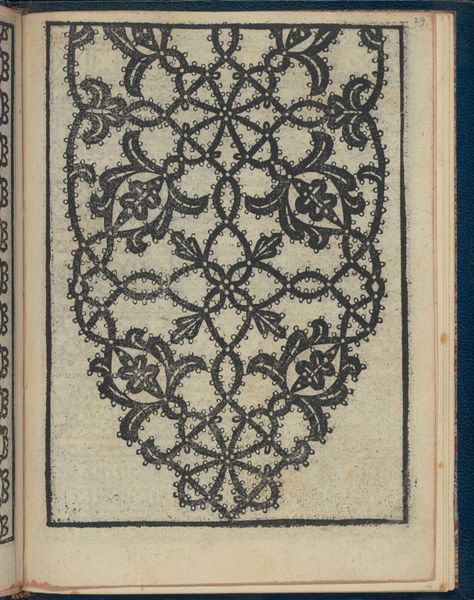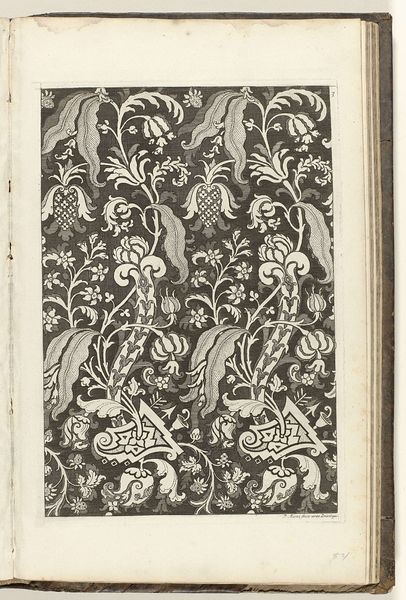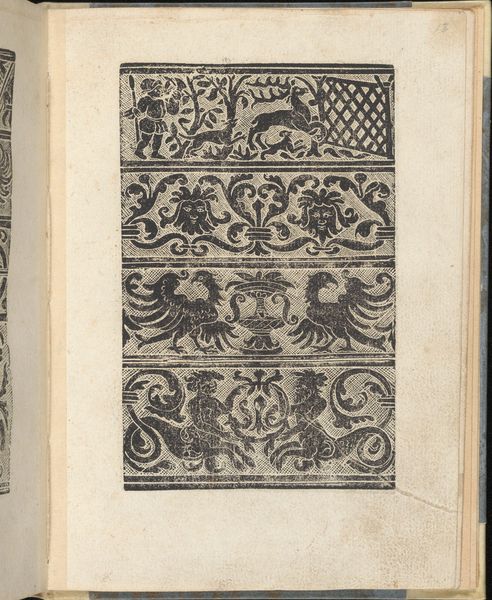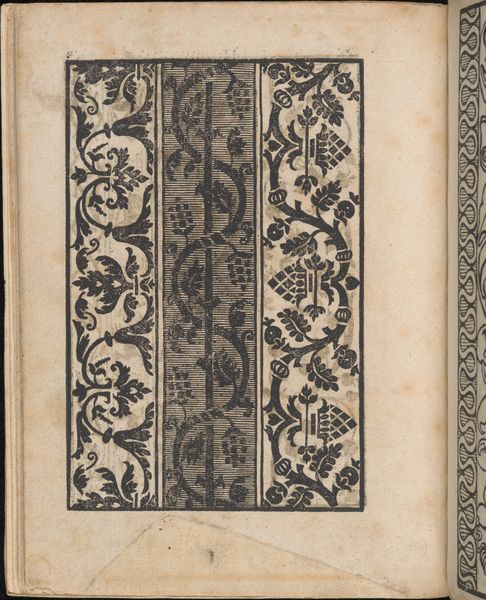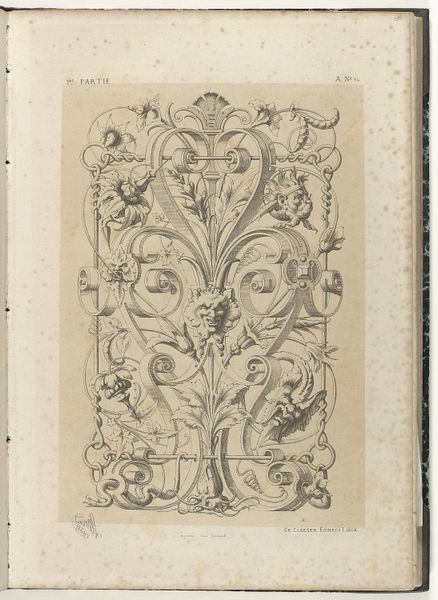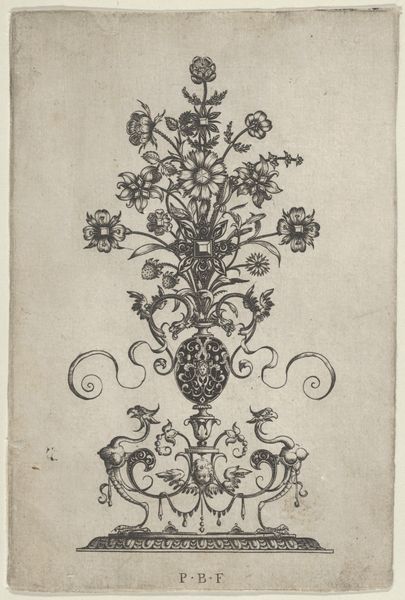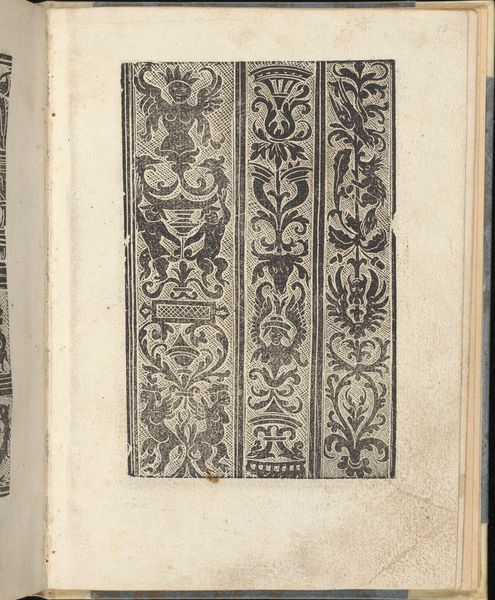
#
natural stone pattern
#
rippled sketch texture
#
pen drawing
#
old engraving style
#
woodcut effect
#
linocut print
#
pen-ink sketch
#
pen work
#
coloring book page
#
pencil art
Dimensions: height 287 mm, width 187 mm
Copyright: Rijks Museum: Open Domain
Curator: Editor: This is "Pattern in black on a white ground" by Daniël Marot, created between 1703 and 1712. It looks like it was done with ink on paper. I’m struck by the detail; it's almost overwhelming, but very satisfying! What are your thoughts when you look at this? Curator: As a materialist, I find myself drawn to the context of its production. Let's consider the labor involved. This level of detail requires a highly skilled hand, likely a master craftsman or someone within their close circle. How does that affect your understanding of the work? Editor: I see what you mean. Knowing it took such expertise makes me think about who commissioned it and what purpose it served. Was this pattern meant to be widely available, or just for a select wealthy clientele? Curator: Exactly. This period saw a rise in pattern books and designs for various crafts. Consider the means of production – ink and paper, relatively accessible materials. However, the artistry elevates it. Was it a tool for dissemination of design ideas, or something more aspirational? Also, who consumed these images? Editor: So, you're saying the materials and labor involved shaped not only the image itself but also its circulation and social impact? Curator: Precisely. It bridges high art and craft, blurring the lines. The black and white contrast, while aesthetically pleasing, would have also made it easier to reproduce through printing methods, potentially expanding its reach. Think of the economics of production! Does this new interpretation change how you view the work? Editor: Absolutely. Thinking about the labor and the means of reproduction makes me appreciate the artwork not just as a static image, but as a document of its time, deeply embedded in the processes of production and consumption. Curator: I am pleased to hear this piece helped expand your knowledge regarding design.
Comments
No comments
Be the first to comment and join the conversation on the ultimate creative platform.


